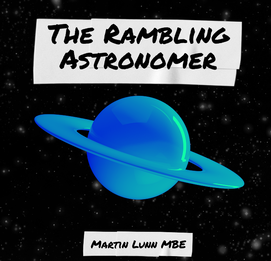August
is both a supermoon and blue moon month, and we can also look forward
to the Perseids, one of the most important meteor showers of the
year.
There
will be two full moons this month, falling on August 1 and the 31.
The second full moon in a month is referred to nowadays as a ‘Blue
Moon’. The Moon takes around twenty-nine and a half days to orbit
the Earth once and except for February all months have either thirty
or thirty-one days, meaning it is possible to have two full moons in
a calendar month.
This
use of the term ‘blue moon’ only goes back to the 1940s when a
letter, sent to the American astronomy magazine ‘Sky and Telescope’
which incidentally is still published, asked the question ‘what is
a blue moon?’. The answer was that it is the second full moon in a
calendar month. The publishers of the magazine, realising that their
answer was unproven, retracted their original statement. However, it
was too late; the genie was out of the bottle, and for the last
seventy-five years everyone has accepted this definition.
I
have my own theory about the term ‘blue moon’. Each month I give
the name of the next full moon, and as I often say, these names go
back to the times of the monastic period in Britain around 1,000
years ago. The monks, who were amongst the cleverest people around
during the middle ages due to their vast monastic libraries, knew
full well that in some years there were thirteen full moons rather
the normal twelve.
Monks
liked order in their lives. They kept diaries and special dates were
always marked in red ink; you may have have heard of the phrase ‘a
red letter day’ which is a monastic saying going back over 1,000
years. I just wonder if, when this thirteenth full moon occurred, it
was marked in diaries in blue ink as a source of irritation because
it messed up a very orderly system. I once checked the reference
library in York minster without success, but a future researcher will
check the Vatican library and discover a monk’s diary with a full
moon marked in blue ink!
In
August we will see the second of the four supermoons visible in 2023.
When the Moon rises on August 1 and 31 it will be closer to the Earth
than normal, and consequently will appear to be 7% larger than usual.
This will make it a wonderful sight. Of course, cloud can spoil the
occasion, but with two supermoons in August and another in September,
we would be very unlucky not to see at least one of the three.
The
average distance between the Moon and the Earth is 238,900 miles,
(384,472km). When the moon is closer than that we have a supermoon.
The August 1 supermoon will be 222,158 miles (357,530km) while the
August 31 supermoon will be slightly closer at 222,043 miles
(357,344km).






























